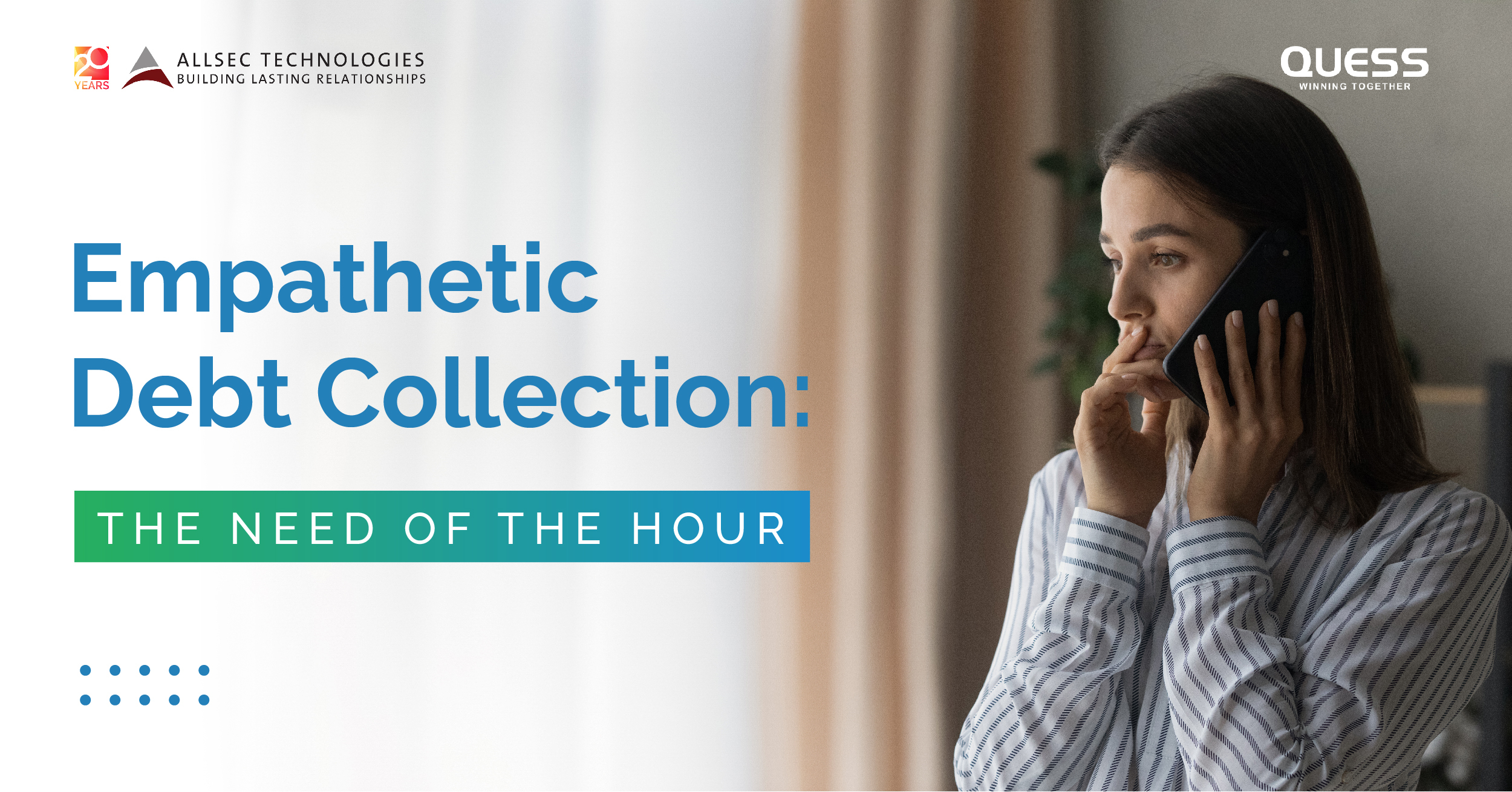
Empathetic Debt Collections: The Need of the Hour
The new normal requires lenders and providers of debt recovery services to rethink their collection strategies. Pushing customers for payments was already a touchy subject, but now the volatile economic situation has compounded the problem. Most borrowers have not recovered from the pandemic’s onslaught. Surveys reveal that 51% of the public is still battling financial anxiety due to credit card debt, lack of savings, and absence of financial planning. Even if reports suggest that the US economy has fully bounced back, the ground reality is unsettling.
From small businesses to global giants, companies are still recovering from the whiplash of the pandemic. Companies in the US are now under a $10.5 trillion debt. According to the Federal Reserve and SIFMA (Securities Industry and Financial Markets Association), this is the highest level of debt in US history. Many household names like Francesca’s, JCPenney, Stein Mart, and Century 21 have already closed shop in all service locations.
Considering the present scenario, collectors will need to make their process as empathetic to the user as possible. This article discusses how to do that effectively.
Incorporating Empathy in Collections
Many lenders and debt recovery agency leaders sometimes mistake sympathy for empathetic engagement. Customers do not want to be patronized. They expect lenders to provide a way out of their debt. For example, a leading cloud computing service provider was able to increase average collections by 10%, when collection representatives focused on positive experiences that helped customers repay their loans.
To mirror this success, business owners and leaders of a debt recovery agency will need to build an effective, empathetic collection funnel. Here are three ways to do that.
Prioritize Problem Understanding
Making assumptions regarding a customer’s delinquency is always counterproductive. Therefore, collectors need to focus on gathering background information before attempting to collect funds. Once the collection agents are able to understand and empathize with the problem, they will be able to provide payment options that the defaulters can adhere to. This will create a positive experience with the customer and increase collector productivity in the long run.
For example, for a leading credit card issuer in the US for the subprime market, focussing on customer problems helped increase collector productivity by 30%. Prioritizing the problems also helped collectors to segment customers based on their situations. This helped reduce the time spent on formalities and increased the duration of conversations that provided a sense of comfort to the borrower.
However, allocating more time for problem analysis and human-to-human conversation may increase account handling time (AHT). An effective way to manage this is to use a multi-channel approach to collect basic customer information. 73% of customers are comfortable with using live chat for answering basic questions and follow-ups. Collectors can take advantage of this and use mediums such as chat, email, and SMS for preliminary communication and connect via call for more detailed discussions. The flexibility of these channels also allows customers to respond in their own time, eliminating the element of push in the collection process.
Explain the Process & Way Out
A common reason for delinquency is poor understanding of the billing statement. And with businesses updating their billing formats more frequently (to meet new compliance requirements), customers will need to stay educated on the updates.
Providers of debt recovery services will need to use multi-channel mediums and segmentation analytics to explain the reason for delinquency. Regular updates can be provided through emails, text messages, and live chatbots. If the customer requests a phone call, the representative can explain the new billing format in person.
Customers have shown to be more welcoming of new payment timelines when they have a clear understanding of their dues and options. A walkthrough of the payment options is also likely to increase the chances of repayment.
The Road Ahead
In the post-pandemic world, collection strategies and debt recovery services that do not incorporate empathy will find little success. Collectors will need to invest time in understanding customer problems and work toward providing solutions that work for both parties. The focus should be on providing useful interactions rather than comforting ones. That is the pinnacle of an empathetic approach.
.
Alldigi offers cradle-grave Debt Recovery Services that are empathetic to all user journeys. Our highly effective collection formula also allows us to deliver higher hit rates, better compliance, and an overall increase in customer retention. Contact us to know more.



